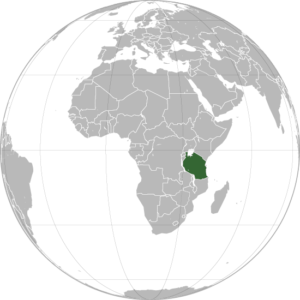Tanzania
Tanzania is a country in East Africa known for its breathtaking landscapes and cultural richness.
 Strategically located in East Africa, Tanzania is bordered by Kenya and Uganda to the north, Rwanda, Burundi, and the Democratic Republic of the Congo to the west, Zambia, Malawi, and Mozambique to the south, and the Indian Ocean to the east. Covering an area of approximately 945,000 km², Tanzania is one of Africa’s largest countries. With an estimated population of around 63 million people in 2024, the nation presents a dynamic and growing market. Dodoma serves as the political capital, while Dar es Salaam remains the key economic and commercial hub.
Strategically located in East Africa, Tanzania is bordered by Kenya and Uganda to the north, Rwanda, Burundi, and the Democratic Republic of the Congo to the west, Zambia, Malawi, and Mozambique to the south, and the Indian Ocean to the east. Covering an area of approximately 945,000 km², Tanzania is one of Africa’s largest countries. With an estimated population of around 63 million people in 2024, the nation presents a dynamic and growing market. Dodoma serves as the political capital, while Dar es Salaam remains the key economic and commercial hub.
Economy and Mining Potential
Tanzania’s economy is diverse, driven by agriculture, tourism, and a rapidly expanding mining sector. In recent years, mining has emerged as a vital contributor to economic growth. The country is endowed with abundant mineral resources, including gold, diamonds, and the uniquely Tanzanian gemstone—tanzanite—as well as other minerals like nickel, coal, and iron ore. Government reforms aimed at streamlining licensing and enhancing infrastructure are creating an increasingly attractive environment for both local and international investors.
Geography and Natural Resources
Tanzania’s varied landscapes—from the expansive plains of the Serengeti to the towering peak of Mount Kilimanjaro—are home to a wealth of natural resources. The country’s mineral deposits are found across diverse regions, such as the Great Rift Valley and the Central Highlands. Key mineral resources include:
- Gold: Tanzania is among Africa’s top gold producers.
- Diamonds: Significant reserves are found in the western regions.
- Tanzanite: A rare and highly valued gemstone unique to Tanzania.
- Other Minerals: Deposits of nickel, coal, and iron ore further bolster the country’s mining potential.
Mining Sector Development
The Tanzanian government has introduced several initiatives to modernize the mining industry, including improvements in regulatory frameworks, faster licensing processes, and investments in critical infrastructure. Notable projects include:
- Large-Scale Gold Mines: Contributing substantially to export revenues.
- Emerging Diamond Operations: With ongoing exploration promising further growth.
- Gemstone Projects: Focused on tanzanite extraction and processing, attracting international attention.
Mining-Related Characteristics
- Abundant Mineral Wealth:
Tanzania’s rich mineral portfolio provides a solid foundation for sustained economic growth and industrial expansion. - Strategic Reforms:
Recent governmental efforts aim to foster a transparent and investor-friendly environment that balances economic growth with responsible mining practices. - Environmental and Social Commitment:
While mining drives economic progress, sustainable practices are being prioritized to ensure minimal environmental impact and positive benefits for local communities. - Technological Advancements:
The adoption of modern technologies—such as remote sensing, geospatial mapping, and automation—enhances operational efficiency and safety in mining operations.
Challenges in Tanzania
Despite its promising prospects, Tanzania faces several challenges, including:
- Infrastructure Limitations:
Continued investments in transportation and energy are essential to support large-scale mining activities. - Environmental Impact:
Addressing ecological concerns, such as habitat disruption and water pollution, remains a key priority. - Regulatory Hurdles:
Ongoing reforms are necessary to refine mining regulations and ensure a balanced approach to development.
Historical and Political Development
Tanzania gained independence in 1961 and, in 1964, formed the United Republic of Tanzania through the union of Tanganyika and Zanzibar. This historical union reflects the nation’s commitment to unity and progress. Over the decades, Tanzania has evolved into a stable, multi-party democracy with a political environment conducive to economic development and foreign investment—particularly in the mining sector.
Geography, Climate, and Demographics
Tanzania boasts a diverse geography that includes vast savannahs, dense forests, and majestic mountains. Its climate ranges from tropical along the coast to more temperate in the highlands, supporting varied economic activities. The country is culturally diverse, with numerous ethnic groups contributing to its rich social tapestry. With a youthful and rapidly growing population, Tanzania offers both significant opportunities and challenges for future development.
In summary, Tanzania is an emerging East African powerhouse with abundant natural resources and a dynamic mining sector. Its ongoing economic reforms, rich mineral wealth, and commitment to sustainable development make it an attractive destination for investment and a key player in the global mining industry.

